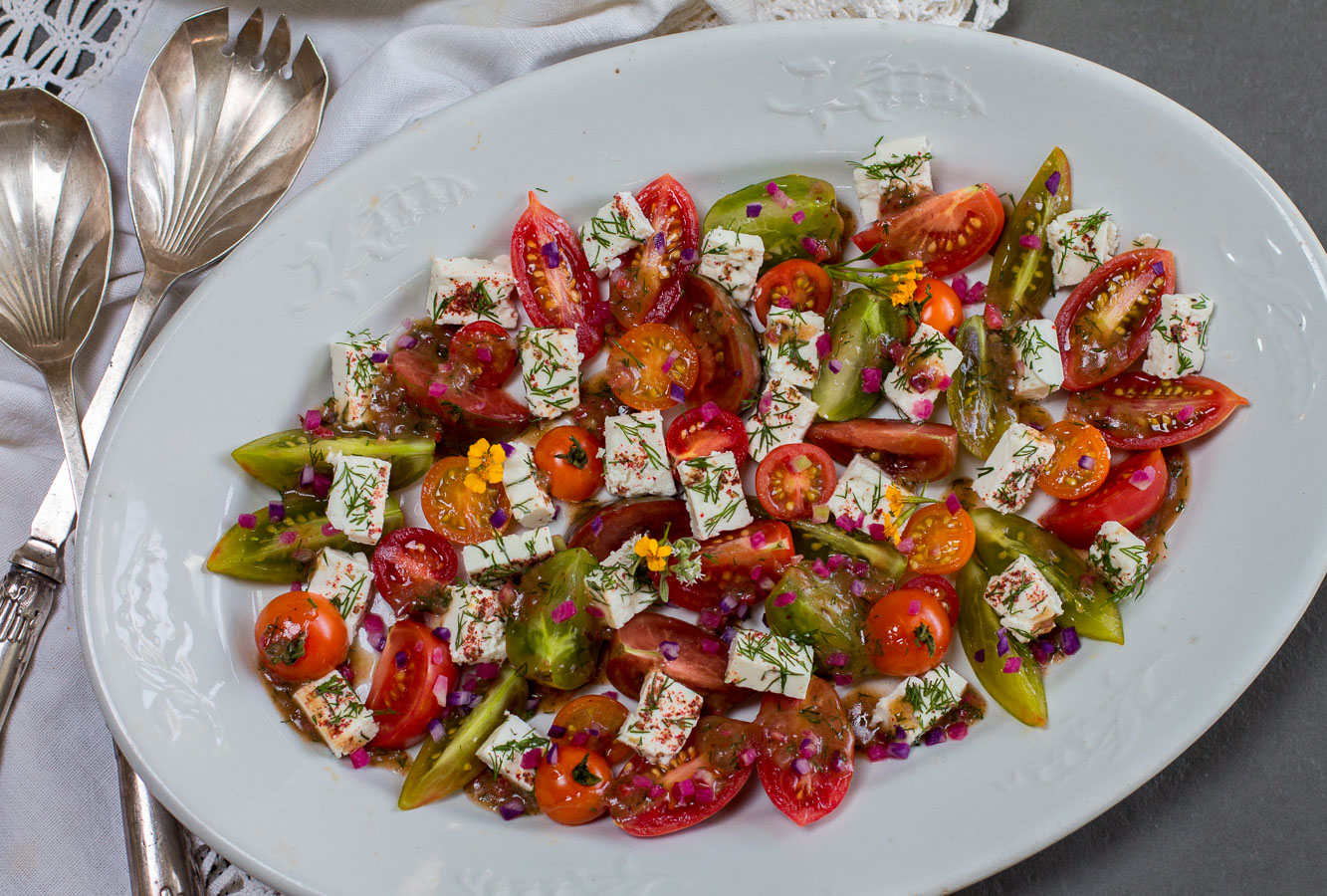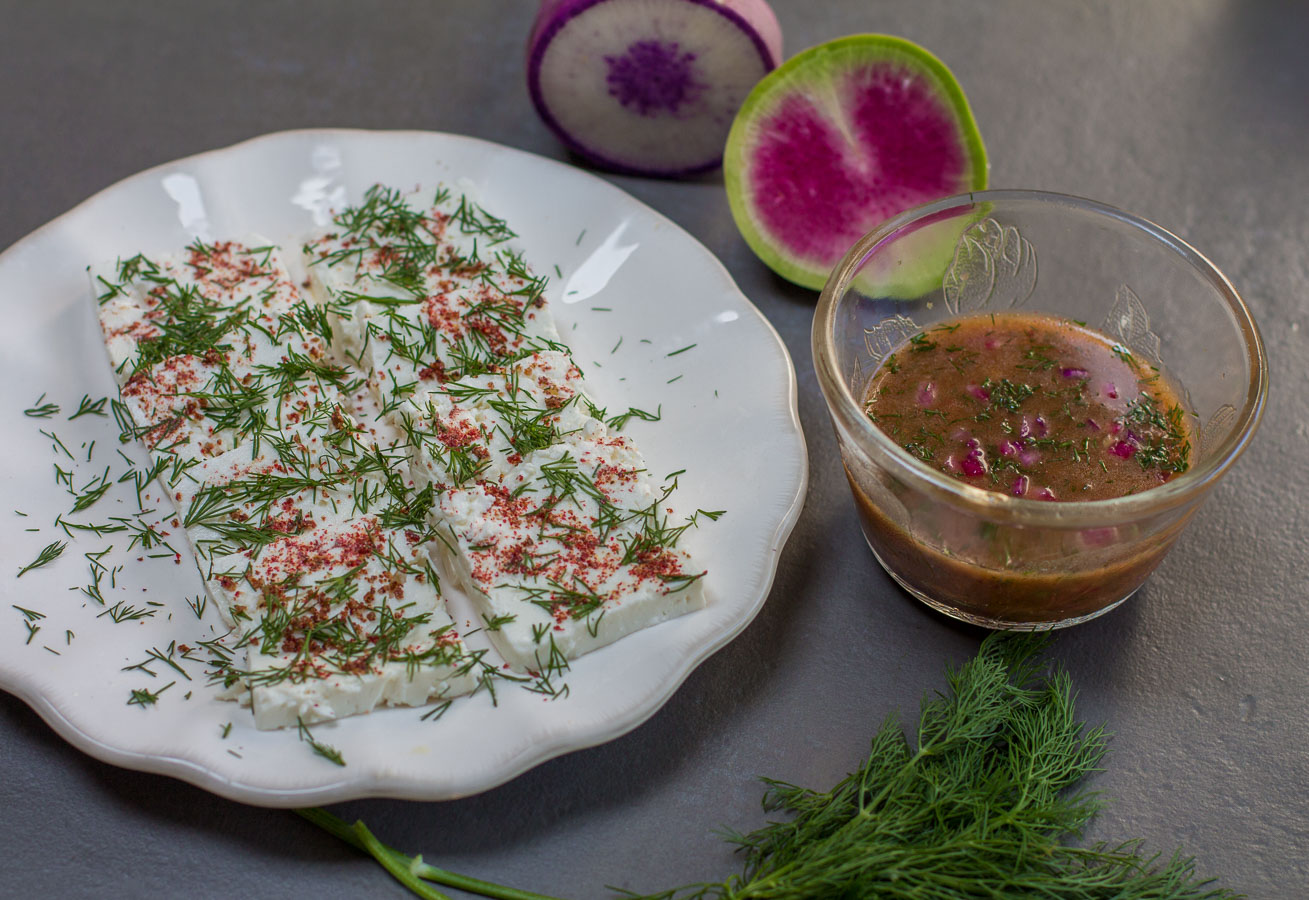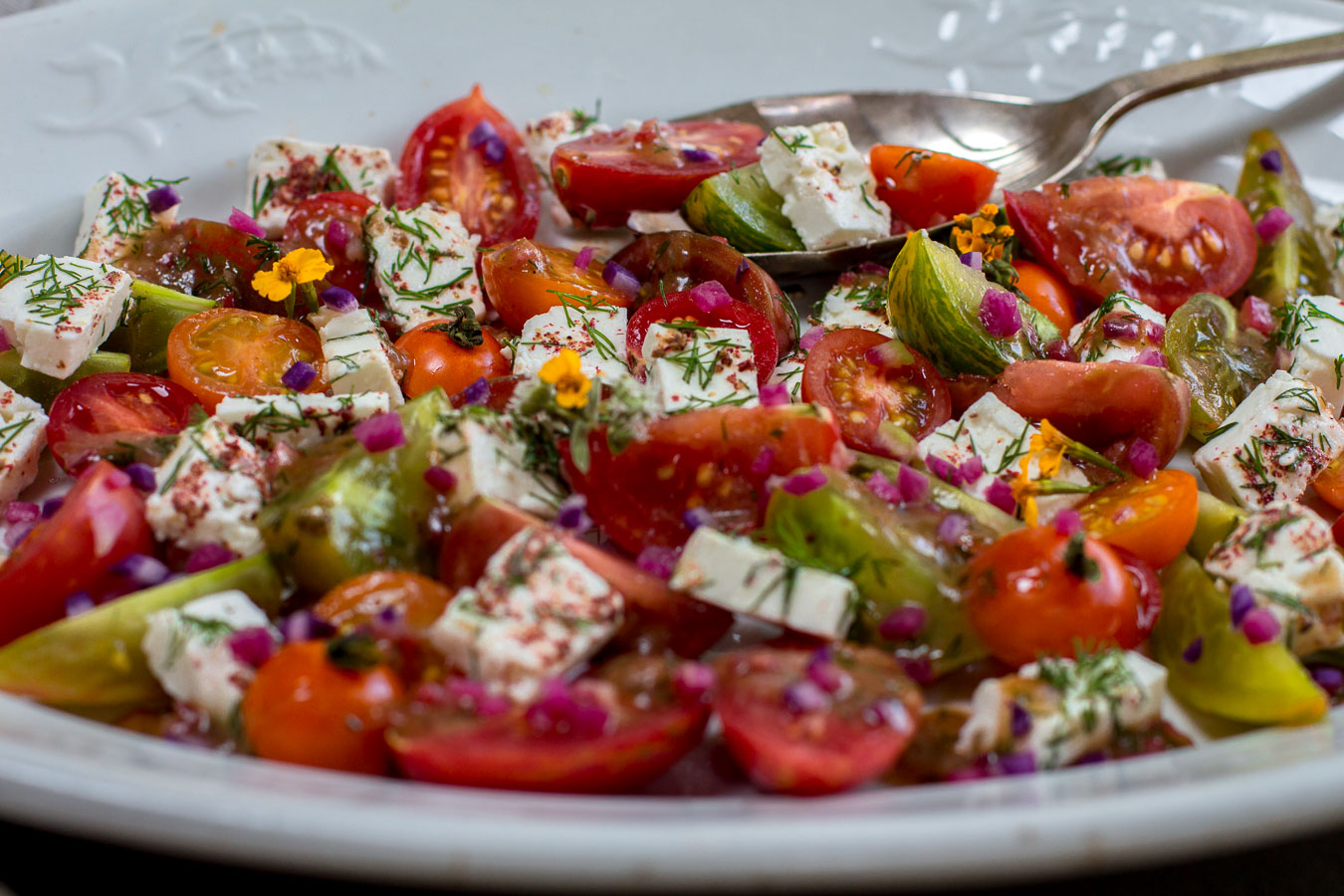Heirloom Tomatoes ~ Bite-Sized, Team up with Creamy French Feta Cubes with a Zesty Vinaigrette for a Simple Summer Salad!



It’s prime tomato season ~ I’m loving all sizes and especially the sweetness of the smaller sized varieties.
From the tiniest of ‘bite-sized’ fruits, to small ‘saladette’ types, this is my favorite category. A host of colors, coupled with a flavor spectrum that squeezes flavor into every little bite. Earthy nuances with lingering flavors.
With names like: Chocolate Chestnut, Green Tiger, Amish Gold, Black Cherry and Brandysweet Plum ~ try many Heirloom varieties as you can – to find your favorite ones … all with an earthy, almost smoky sweetness to them.
For this recipe, I’m using the finest ingredients with minimal preparation and skill. Just picked flavors of the smaller sized tomatoes, simply cut in half team with sliced cubes of French Feta – a goat’s milk variety made in France which is slightly drier and tangier…. and creamier!
Toss some fresh-cut dill and ground pink peppercorns (dried berries) all over the feta and drizzle on a whisked, zesty Dill and Radish Vinaigrette. Done.
Delicious by itself, or with cubed, herbal grilled chicken tossed in. For a vegetarian, the addition of garbanzo beans (also doused with fresh-cut dill) would be a lovely addition to the salad.
Taking a New Look at an Old Variety:
What Is An ‘Heirloom’ Tomato?
According to noted authorities, there are four descriptions or categories of heirloom tomatoes. A ‘Commercial’ Heirloom means an open-pollinated variety introduced prior to 1940. ‘Family’ Heirloom describes a variety grown from seeds that have been handed down, from generation to generation. The deliberate crossing of two varieties basically creates a hybrid. By planting many seeds of this cross and then collecting seeds from the best plants among this group. Over a succession of at least five generations of this refining process one can ‘dehybridize’, the original strain. This results in a ‘Created’ Heirloom. Then finally, the ‘Mystery’ Heirloom, which is a product of cross pollination, though usually unintentional.
It can be said be said that all heirloom varieties are open-pollinated, but not all open-pollinated varieties are heirlooms. Open-pollinated basically means that if seeds are collected form a fruit, the plants grown from these seeds will yield identical fruit.
Are Organic Tomatoes Better?
A farming experiment at the University of California, Davis, has found that organically grown tomatoes are richer in certain kinds of flavonoids than conventionally grown tomatoes.
Researchers have found that the organic tomatoes have almost double the concentration of two types of flavonoids — quercetin and kaempferol — which are considered to be healthful plant compounds with potent antioxidant activity.
Conventionally grown tomatoes get commercial fertilizer made with soluble inorganic nitrogen, a form of nitrogen the plants can take up very quickly. The organic tomatoes get nitrogen from manure and composted cover crops. These organic materials have to be broken down by the microbes in the soil before the nitrogen is released to the plants.
“Organic” ~ this is the gold standard among food-labeling terms. The National Organic Program is administered by the U.S. Department of Agriculture, and it permits the official organic seal only on products that meet strict requirements. In the United States, any manufacturer or marketer’s claims of “organic” must be certified by an accredited third party.
Sustainable is the new ‘buzz’ word: sometimes being offered instead of natural or organic. Whichever terminology use choose to adopt, the principle can be broken down into three main concepts:
– Omission of toxic pesticides
– Omission of synthetic fertilizers.
– Use techniques and products that build and maintain soil life.
Hope you enjoy Tomato Season as much as I do!!
Karen



